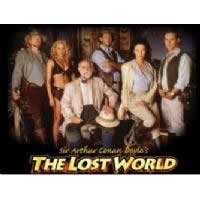

This was still the case when I was a university undergraduate, in the 1960s. For the next century, Catastrophism languished in the intellectual museum drawer reserved for Curious Outmoded Beliefs. Indeed, in the post-Darwinian world, Catastrophism seemed to reflect the emotional turmoil of Cuvier and his pupil Agassiz, men who opposed evolution for religious reasons, and who were obliged to invoke violent upheaval to fit their beliefs to the geological record. In the new Darwinian picture, there was little room for violent catastrophe. When Darwin proposed his theory of evolution in 1859, he built upon these ideas of gradual change.

The systematic study of geology in the nineteenth century led instead to a new doctrine, called Uniformitarianism, which argued that the earth changed gradually, and that extinctions had occurred slowly over time. His theory, called Catastrophism, was hotly debated-and widely ridiculed-for decades to come.Īlthough Cuvier’s daring intellectual leap led to the eventual acceptance of extinction, his belief in catastrophe fared less well. Cuvier believed that the extinctions had occurred as a result of world-wide catastrophes, akin to Noah’s flood. And in 1805, Baron Georges Cuvier, the most influential anatomist of his day, reluctantly concluded that the bones represented creatures that had become extinct. These bones were not gigantic lizards or elephants.

Therefore it followed that these old bones could only represent variants of animals still alive.īut with further study, that early view proved unsupportable. Individual animals might die, but whole species did not. The natural world at that time was essentially seen as a static, unchanging world. Most scientists thought that this explanation must be true, since God had created the world in the Biblical seven days-and God would never allow any of his creations to become extinct. What could account for these bones? What animals did they represent? At first, scientists argued that the bones were the remnants of gigantic versions of animals now represented in smaller, contemporary forms.

In the late 1700s, when giant animal bones were first dug up in Europe, they caused a crisis among scientists of the time. Why are people so interested in dinosaurs? Why are we so fascinated by these giant vanished creatures from the past? There are many reasons, but the I believe most compelling is that the dinosaurs confront us-directly and unavoidably-with the reality of extinction.


 0 kommentar(er)
0 kommentar(er)
